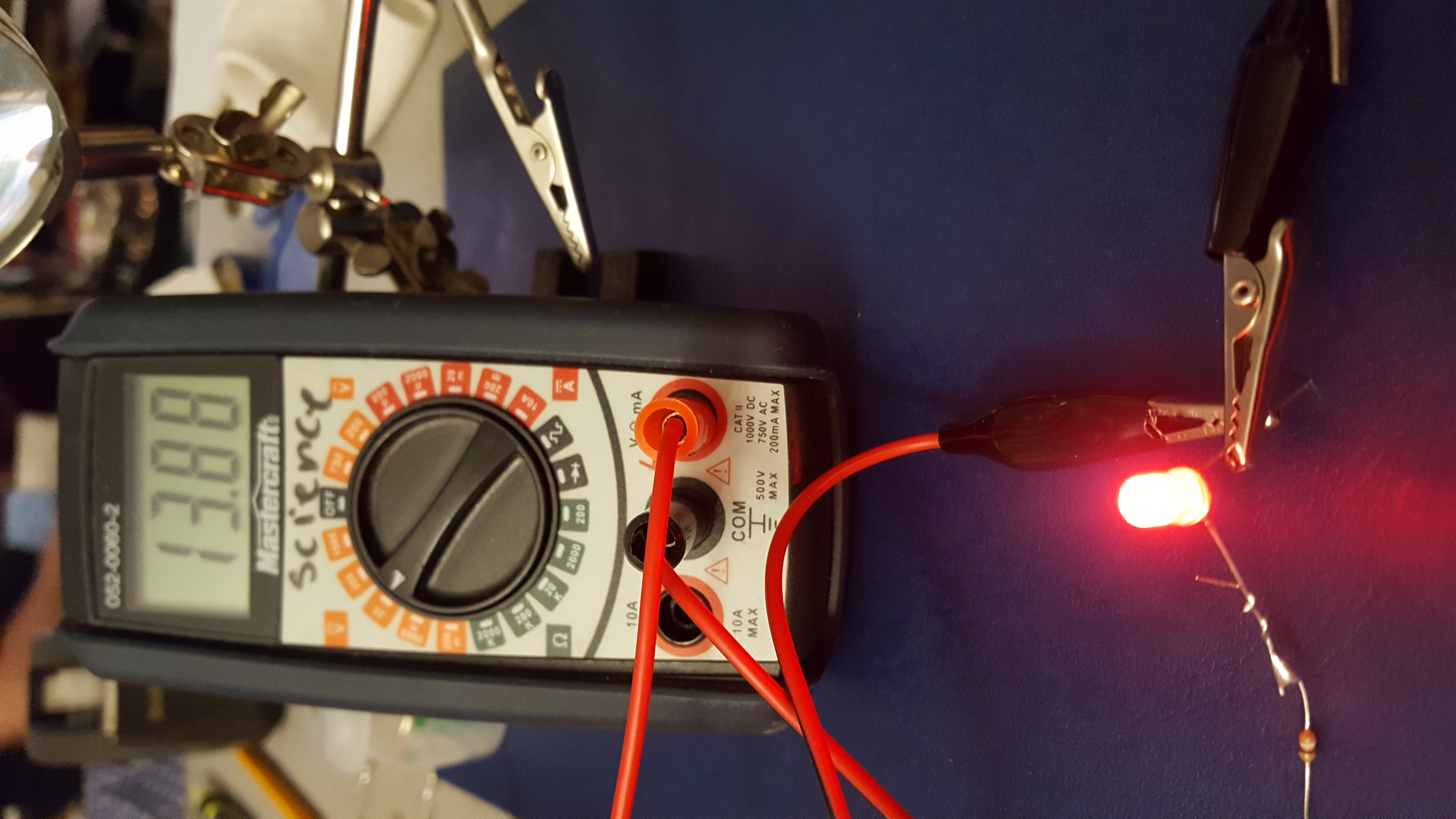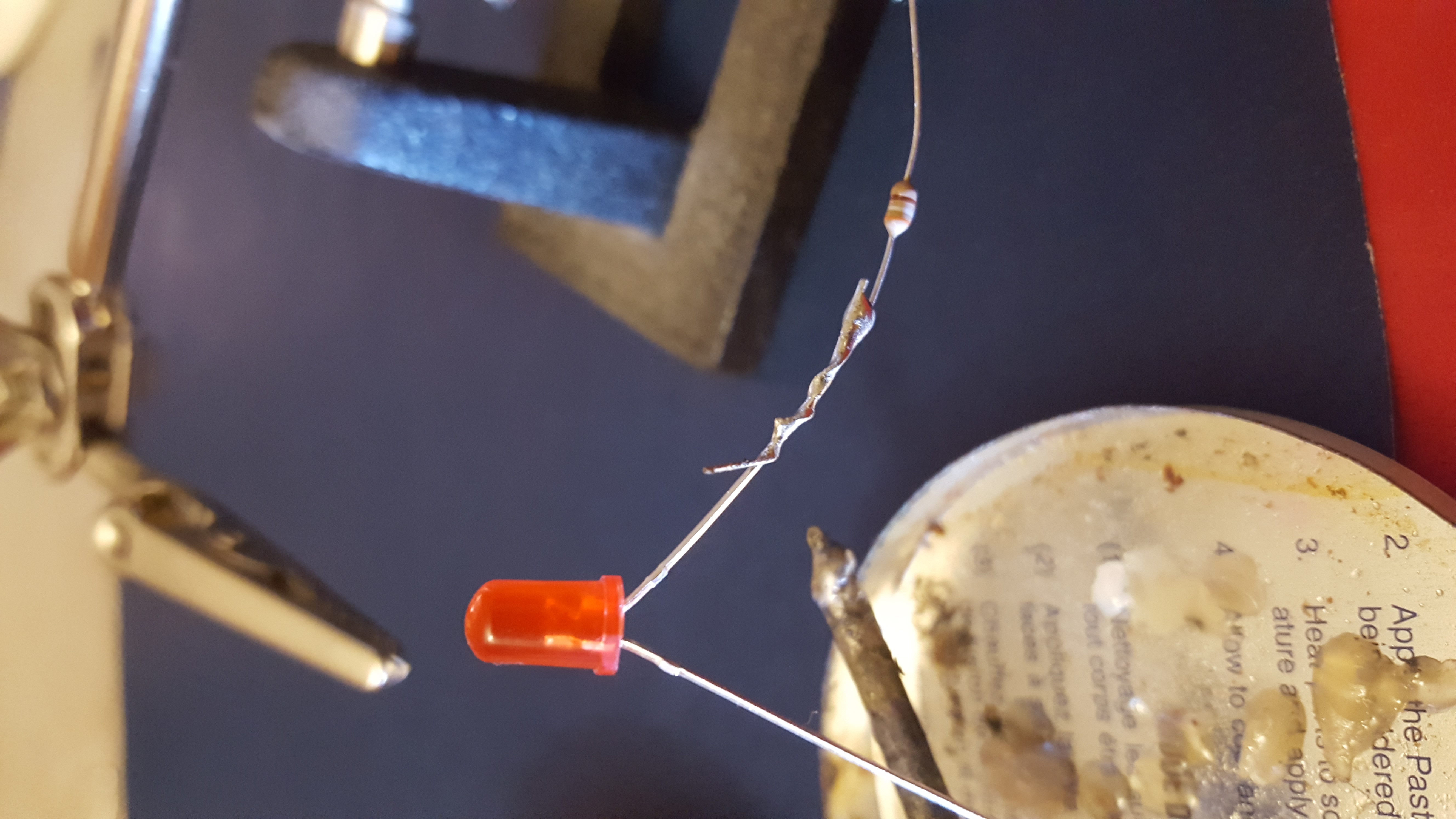LEDs: An alternative to traditional bulbs
May 27, 2018 Filed in:
ArticlesDavid Gervais
STAO Safety Chair
The traditional incandescent bulbs used for teaching series and parallel circuits are rated for 3 V or 6 V. The problem is that many power supplies can generate 12 to 15 V. As a result, it is common to have many blown bulbs. With several sections teaching this unit, bulbs can quickly become in short supply. Each bulb replacement can cost $1.00 each, and often are included in the general department order at the end of each semester. For those teachers using breadboards, traditional bulbs are also not easily adapted to fit into the small holes. LEDs are a great alternative for many reasons.
LEDs are also rated for low voltages, but by adding a small resistor to one of the legs, the LED can be used at excessive electric potentials. An LED that would blow at 3 V can be used at 18 V if it has the resistor attached.


To permanently add the resistor, I twisted the resistor and LED wire together. To be consistent, I attached the resistor wire to the anode (+) leg of the LED. To identify this, I held the LED up to a light. The biggest metal in the LED bulb is the cathode (-). I added solder paste to the two twisted wires. Using a pencil style soldering gun, I added the smallest drop on to the soldering iron tip, touched the paste and they were instantly soldered.


What are the advantages of this LED arrangement over a traditional bulb? The LEDs can function at higher voltages, the legs can easily fit into breadboards or can be alligator clipped into circuits and they are cheap. I bought a kit with 100 LEDS, and it came with the 390 ohm resistors. The total cost was less than $10.00.
This was initially presented at the
2018 OAPT Conference at Western University, London Ontario.
Editor’s Note: LEDs are also useful in physics classes because they can be used to
measure Planck’s constant as part of their study of quantum physics.
Tags: Electricity, Light



